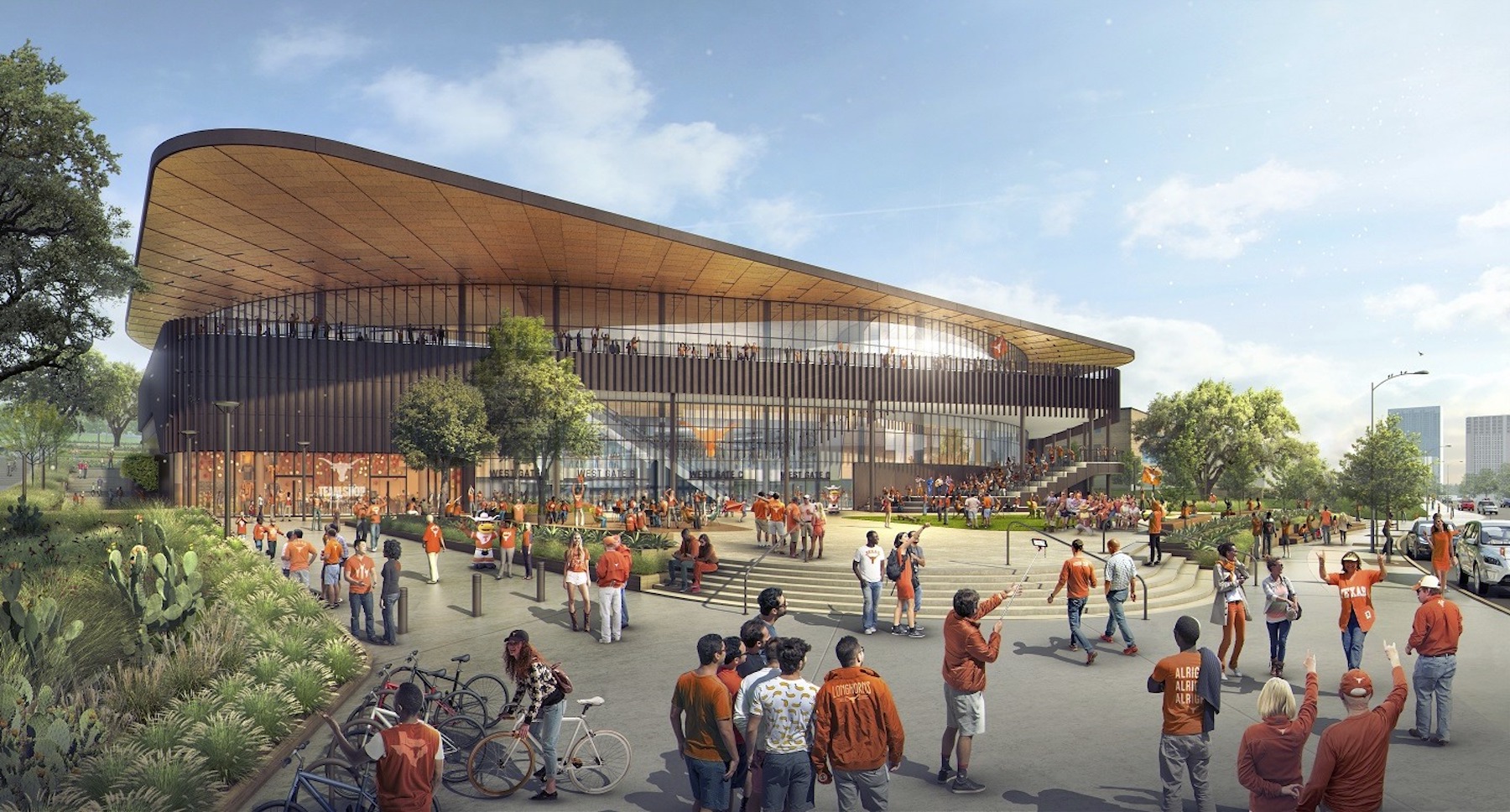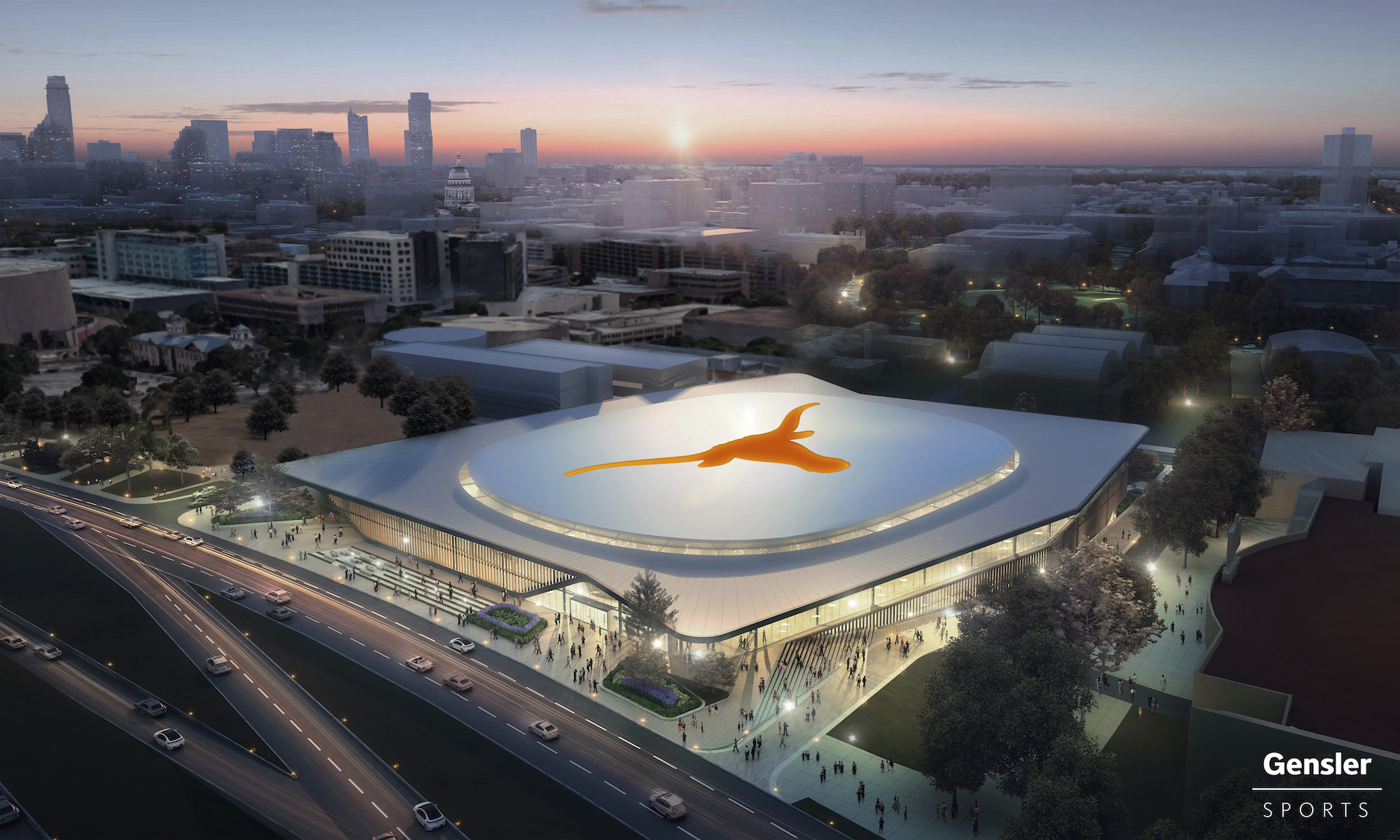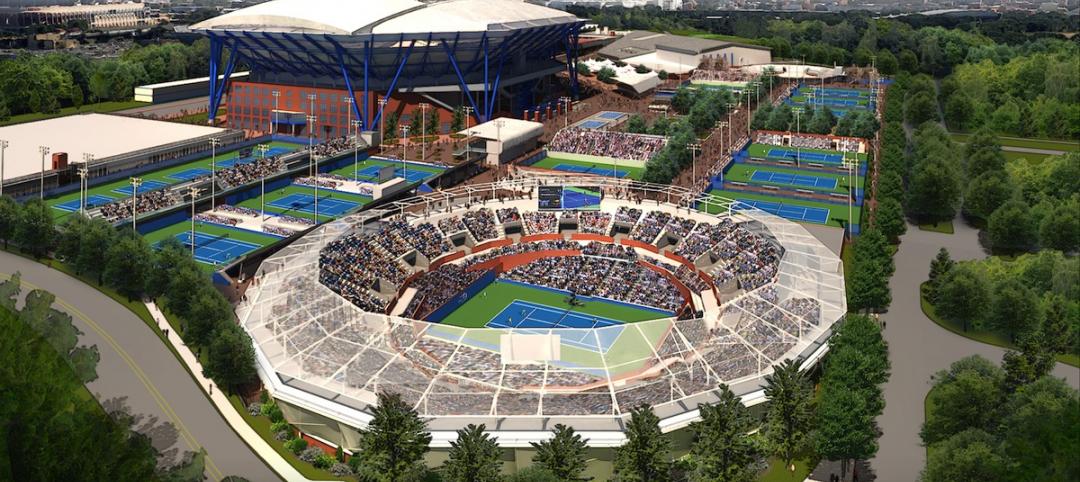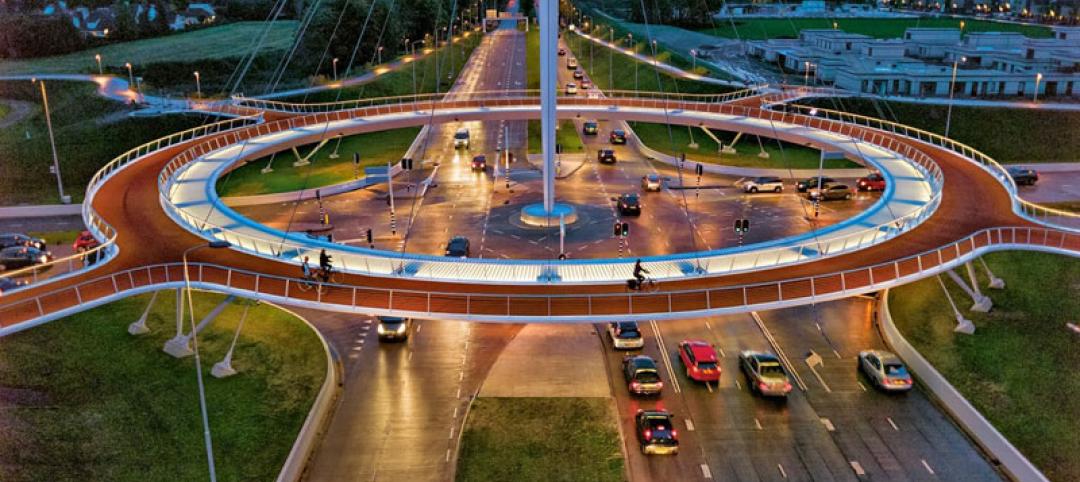The recently completed 530,000-sf University of Texas Moody Center is the new home for men’s and women’s basketball at the Austin campus. At full capacity, the arena, located in a former parking lot just south of Mike A. Myers Stadium, the home of Longhorn track and field and soccer teams, will seat 15,000 spectators.
The structure can also host more intimate events when a first-of-its-kind operable upper bowl closure screen converts the venue from 15,000 seats to a 10,000-seat configuration. Inside the building, the advanced roof structure supports amenities designed to make the building flexible for a variety of events: a central retractable video board and a 250,000-lb. show rigging grid including an extensive tension wire rigging platform.
These features are expected to make Austin a major destination for touring shows. The arena bowl precast seating units accommodate an efficient under-seat air distribution system, helping to make the Moody Center one of the most sustainable arenas in the U.S., according to a news release by structural engineer Walter P Moore.
The site presented a significant structural challenge due to slopes up to 50 feet moving from west to east. A deep retention system with heights up to 70 feet was employed, which is “unprecedented for an arena structure,” the release says.
Much of the arena is underground, and a concrete frame forms the primary structure of the building. Daylighting is provided at the upper concourse at the east side and the main concourse at the west side.
Around the perimeter of the building, the long-span steel roof cantilevers up to 75 feet beyond the edge, creating shaded entry spaces. The cantilevered roof floats above an extensive glass curtain wall.
The Moody Center replaces the Frank C. Erwin Center, a 40-year-old arena. That iconic structure was demolished to make way for the expansion of the Dell Medical School.
Owner and/or developer: The University of Texas System Office of Facilities Planning & Construction
Design architect: Gensler
MEP engineer: Henderson Engineers
Structural engineer: Walter P Moore
General contractor/construction manager: AECOM Hunt




Related Stories
| Apr 2, 2014
8 tips for avoiding thermal bridges in window applications
Aligning thermal breaks and applying air barriers are among the top design and installation tricks recommended by building enclosure experts.
| Mar 26, 2014
Callison launches sustainable design tool with 84 proven strategies
Hybrid ventilation, nighttime cooling, and fuel cell technology are among the dozens of sustainable design techniques profiled by Callison on its new website, Matrix.Callison.com.
| Mar 25, 2014
Sydney breaks ground on its version of the High Line elevated park [slideshow]
The 500-meter-long park will feature bike paths, study pods, and outdoor workspaces.
| Mar 20, 2014
Common EIFS failures, and how to prevent them
Poor workmanship, impact damage, building movement, and incompatible or unsound substrate are among the major culprits of EIFS problems.
| Mar 13, 2014
Do you really 'always turn right'?
The first visitor center we designed was the Ernest F. Coe Visitor Center for the Everglades National Park in 1993. I remember it well for a variety of reasons, not the least of which was the ongoing dialogue we had with our retail consultant. He insisted that the gift shop be located on the right as one exited the visitor center because people “always turn right.”
| Mar 12, 2014
14 new ideas for doors and door hardware
From a high-tech classroom lockdown system to an impact-resistant wide-stile door line, BD+C editors present a collection of door and door hardware innovations.
| Feb 26, 2014
Billie Jean King National Tennis Center serving up three-phase expansion
The project includes the construction of two new stadiums and a retractable roof over the existing Arthur Ashe Stadium.
| Feb 14, 2014
First look: Kentucky's Rupp Arena to get re-clad as part of $310M makeover
Rupp Arena will get a 40-foot high glass façade and a new concourse, but will retain many of its iconic design elements.
| Feb 14, 2014
Crowdsourced Placemaking: How people will help shape architecture
The rise of mobile devices and social media, coupled with the use of advanced survey tools and interactive mapping apps, has created a powerful conduit through which Building Teams can capture real-time data on the public. For the first time, the masses can have a real say in how the built environment around them is formed—that is, if Building Teams are willing to listen.
| Feb 11, 2014
World's first suspended bicycle roundabout [slideshow]
Located in the Netherlands, the project was designed to promote a healthier lifestyle.
















